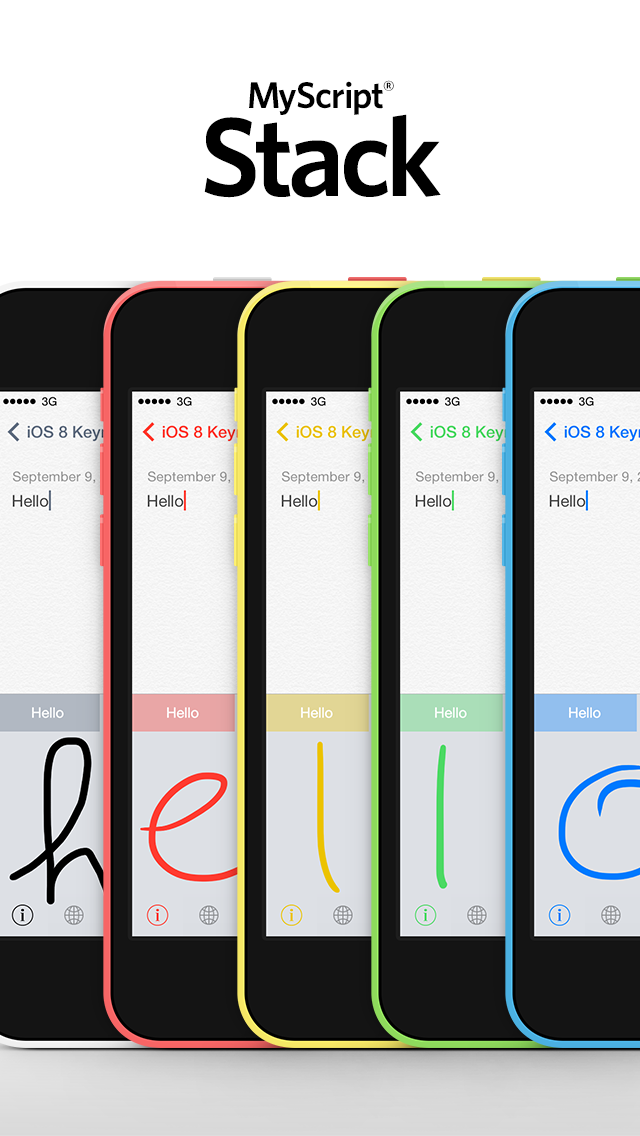Myscript Stylus Linux

Related stories • • • When MyScript Calculator by Vision Objects landed on the Google Play store, the handwriting recognition was said to be top-notch. Taking their technology a step further, the company released MyScript Notes Mobile, which lets you handwrite words directly onto the screen and have them converted to text. Their most recent app takes the same handwriting functionality of the Notes Mobile app and lets you use it system-wide on your Android device, replacing the keyboard. You don't have to use a stylus to do the writing, though it might be a bit faster and more precise. Ready to try it on your device?
Kak napisatj pismo sponsoru obrazec. MyScript for Livescribe was an application that converted ink to text and dedicated to Livescribe Pulse/Echo Smartpen users. Download links. MyScript Stylus brought handwriting recognition to all apps by replacing the keyboard on your PC desktop.
Here's how to get started: Step 1: Install a copy of the from the Google Play Store. Right now, the app is free.
However, it is in beta, and could either remain free or go the same direction as the MyScript Notes Mobile app ($7.94) by adding a price tag. In other words, try it while it has the best price. Screenshot by Nicole Cozma/CNET Step 2: After the install, tap on the MyScript Stylus icon in your app drawer to go through the enabling process. You'll be prompted to download the language packs of your choosing, and then be given a quick link to your Settings area to enable the keyboard. The MyScript Stylus keyboard in action. Screenshot by Nicole Cozma/CNET Step 3: Watch the gesture video. I could list all of the gesture shortcuts this keyboard offers to keep your writing quick and easy, but it's probably a better idea if you watch its 90-second video demonstrating some of them.
MyScript Stylus supports 54 languages (you can see the list ) and is a great alternative to traditional keyboards when one-handed input is needed. Try it out and leave your thoughts in the comments.
Others have said the difference is sourcing vs executing but no one has outlined the functional differences. The biggest functional difference is that exit, cd, and variable assignments will affect the currently running shell if you source it, but not if you execute it. To demonstrate, try the following: $ cat test.sh #!/bin/bash mkdir -p test cd test pwd foo=bar echo script foo: $foo $./test.sh /Users/kevin/test script foo: bar $ echo $foo $ pwd /Users/kevin $. Test.sh /Users/kevin/test script foo: bar $ echo $foo bar $ pwd /Users/kevin/test $ Now try this: $ cat test.sh #!/bin/bash exit $./test.sh $. Test.sh [Process completed] As you can see, exit in an executed script will finish that script, but if you source a script with exit, it will exit your current shell! Help source says: source: source filename [arguments] Execute commands from a file in the current shell. Read and execute commands from FILENAME in the current shell.
The entries in $PATH are used to find the directory containing FILENAME. Fhotoroom hdr 301 final software keygen torrent. If any ARGUMENTS are supplied, they become the positional parameters when FILENAME is executed.
Exit Status: Returns the status of the last command executed in FILENAME; fails if FILENAME cannot be read. Source is a synonym for., that means you can write both. Myshellscript or source myshellscript What they do: source reads every line of the file (line by line) and executes it in the current shell. But./myshellscript executes the file in the current directory if it has the rights to do so. This could also be /tmp/foo/bar/myshellscript (to execute the file myshellscript which is in the directory /tmp/foo/bar) or /usr/local/bin/myshellscript That means, that here the dot is just the current directory.
Therefore./myshellscript executes the file called myshellscript in the current directory. For example try cd. Which changes to the current directory (no real change;-)) or ls. Which lists the content of the current directory. And as @Alvin Wong commented: You can try this script #!/bin/foobarNonExisting echo 'This is the Shell that executes me:' echo $SHELL with.
Or source to see, that it does not read the shebang. It just uses your current shell. Executing the script itself would lead to an error. Is a synonym to the source command. Instead of forking a sub shell to execute the script it reads the script into the current shell environment. In other words./script will execute the script in a spawned sub shell and does the processing there.